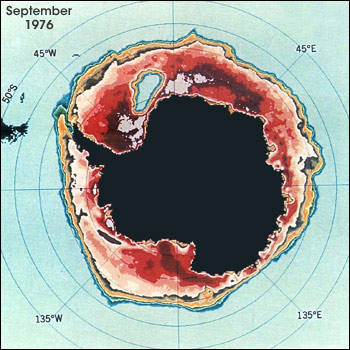The subduction and export of Subantarctic Mode Water (SAMW) supplies the upper limb of the overturning circulation and makes an important contribution to global heat, freshwater, carbon and nutrient budgets. Upper ocean heat content has increased since 2006, helping to explain the so-called global warming hiatus between 1998 and 2014, with much of the ocean... Continue Reading →
Evidence linking Arctic amplification to extreme weather in mid-latitudes
Arctic amplification (AA) – the observed enhanced warming in high northern latitudes relative to the northern hemisphere – is evident in lower-tropospheric temperatures and in 1000-to-500 hPa thicknesses. Daily fields of 500 hPa heights from the National Centers for Environmental Prediction Reanalysis are analyzed over N. America and the N. Atlantic to assess changes in north-south (Rossby)... Continue Reading →
Algae drive enhanced darkening of bare ice on the Greenland ice sheet
Melting of the Greenland ice sheet is enhanced by surface darkening caused by various impurities. We quantified the contribution of dark pigment-producing algae to the ice sheet surface darkening, based on field measurements in the southwestern part of the ice sheet during the 2014 melt season. Our analysis reveals that the impact of algae on... Continue Reading →
Concerns for ozone recovery
This new paper published in Science suggests that as the tropical oceans get warmer, ocean emissions of methyl bromide (CH3Br) and other short-lived ozone-depleting substances will increase, slowing down the ongoing ozone recovery. Image credit: Scientific assessment of ozone depletion 2014 http://science.sciencemag.org/content/358/6368/1257 https://www.esrl.noaa.gov/research/themes/o3/ http://science.sciencemag.org/content/353/6296/269
Arctic report card: update for 2017
NOAA's Arctic program released Arctic Report Card Update for 2017. The report finds "Arctic shows no sign of returning to reliably frozen region of recent past decades", "The sea ice cover continues to be relatively young and thin with older, thicker ice comprising only 21% of the ice cover in 2017 compared to 45% in 1985.", and... Continue Reading →
Explaining extreme events from a climate perspective
This special report of the Bulletin of the American Meteorological Society (BAMS) presents some extreme events in 2016, such as the record global heat, the heat across Asia, the 2015-16 El Niño and a marine heat wave off the coast of Alaska, and discusses how human-caused climate change may have affected the strength and likelihood of these extreme events.... Continue Reading →
On the fragile relationship between El Niño and California rainfall
This study newly accepted in Geophysical Research Letters examined why California experienced extremely wet winter and spring conditions during the 1997-98 and 1982-83 El Niños, but near normal rainfall during the extremely strong 2015-16 El Niño. Statistical data analyses and simple model experiments were used to show that sufficiently warm and persistent sea surface temperature anomalies... Continue Reading →
Active Pacific meridional overturning circulation (PMOC) during the warm Pliocene
An essential element of modern ocean circulation and climate is the Atlantic meridional overturning circulation (AMOC), which includes deep-water formation in the subarctic North Atlantic. However, a comparable overturning circulation is absent in the Pacific, the world’s largest ocean, where relatively fresh surface waters inhibit North Pacific deep convection. We present complementary measurement and modeling... Continue Reading →
Interannual variability of western North Pacific SST anomalies and its impact on North Pacific and North America
In this study, the interannual variability of sea surface temperature (SST) and its atmospheric teleconnection over the western North Pacific (WNP) toward the North Pacific/North America during boreal winter are investigated. First, we defined the WNP mode as the first empirical orthogonal function (EOF) mode of SST anomalies over the WNP region (100–165°E, 0–35°N), of... Continue Reading →
Global atmospheric teleconnections and multidecadal climate oscillations driven by Southern Ocean convection
A 1000-yr control simulation in a low-resolution coupled atmosphere–ocean model from the Geophysical Fluid Dynamics Laboratory (GFDL) family of climate models shows a natural, highly regular multidecadal oscillation between periods of Southern Ocean (SO) open-ocean convection and nonconvective periods. It is shown here that convective periods are associated with warming of the SO sea surface... Continue Reading →









